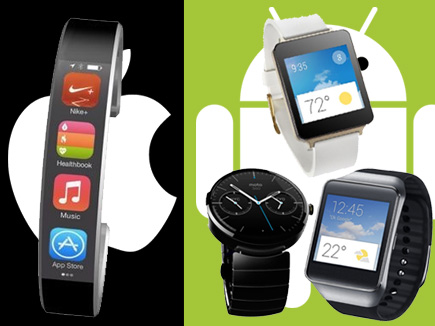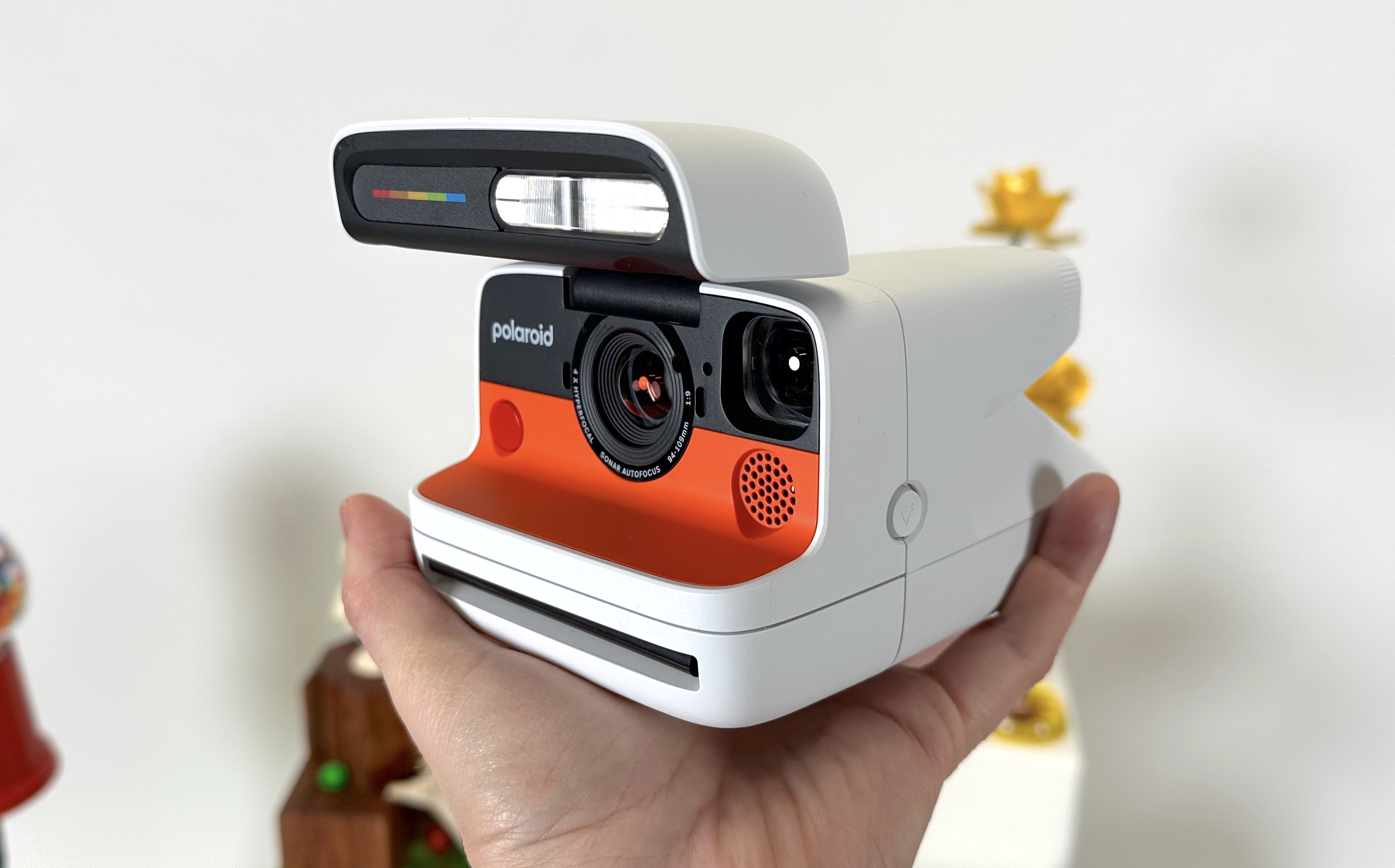Why Apple's iWatch Already Beats Android Wear (Op-Ed)
A lukewarm reception to the first wave of Android Wear smartwatches leaves the door wide open for a more focused and sleek iWatch.


The reviews are in for the first Android Wear-powered smartwatches, and they look about as glowing as the ones for "Transformers: Age of Extinction." In fact, the way the smartwatch evolution is looking right now, the whole category could be extinct before you say "fad." But don't roll the credits just yet.
By delivering a platform that feels half-baked, Google has left the door wide open for Apple's iWatch, expected this fall. This war may not even be close.
To understand why Apple now has the upper hand, you first need to look at where Android Wear falls short on launch devices such as the LG G Watch and Samsung Gear Live. The platform gets some things right, including delivering alerts based on the time of day and your location. (For example, when you leave for the airport, the device will display your flight info on your wrist.) I also like how Google has integrated voice recognition — without turning the watch into a literal phone. Just say, "OK, Google," and ask your question, schedule an appointment and so on.
MORE: iWatch Rumors—Specs, Features and More
The problem with Android Wear is that it doesn't do enough to justify its existence. One major flaw is that you can't yet decide which contacts get to buzz your wrist. It's all or nothing, although Google says customization is on the way. The interface is also way too swipe-happy. My favorite example: The Music card/app on the watch uses separate screens for pause, skip and back buttons. Is this a joke?
Then there's the hardware itself. Both the LG G Watch and Gear Live have displays that are extremely difficult to read outdoors. They're also bulky, though the G Watch is slimmer, and they both last about a day on a charge. No one wants to juice up their watch every night along with their smartphone. The sexier circular Moto 360 looks like it has more promise, but the underlying Android Wear platform needs more love, both from developers and Google, before it resonates with shoppers.

Meanwhile, Apple is reportedly working on an iWatch that looks like it will beat Android Wear on design, app ecosystem and — most importantly — focus. Instead of attempting to be an all-purpose shrunken smartphone, the iWatch will reportedly focus on fitness and health. Yes, Android Wear has a step counter built in, and the Gear Live features a heart-rate monitor, but the iWatch looks like it will be much more robust in this department.
According to The Wall Street Journal, the iWatch will have 10 different sensors to track health and fitness. Like today's popular fitness trackers, the device will supposedly measure steps taken, calories burned, sleep quality, heart rate, and even glucose and sweat. The device will presumably sync with the iPhone 6's Health app, but I get the feeling the iWatch will be able to do a lot of stuff even when your smartphone isn't with you. Android Wear watches become veritable doorstops without their companion handsets.
As for design, the iWatch will reportedly sport a curved glass body that looks less like a clunky calculator watch that's been ripped into the present and more like a futuristic fashion statement. It's no coincidence that Apple hired the former CEO of Yves Saint Laurent to work on "special projects." The only inspired smartwatch design I've seen up until now is the Samsung Gear Fit, with its curved OLED display. I expect an even more polished device from Apple.
MORE: iPhone 5s vs Galaxy S5
iWatch rumors also suggest the device win run iOS, although it will likely be a scaled-down version with apps optimized for its smaller display. There are 22 apps for Android Wear in the Google Play store as of this writing, including IFTTT, Pinterest and Fly Delta. However, these "apps" aren't native; they're merely phone apps that provide an enhanced notification and control experience on the watch. I can almost guarantee that dozens of compelling apps will be available for Apple's wearable on day one.
Can Android Wear recover from what looks like a dud of a launch? Perhaps, but I find it disappointingly ironic how little differentiation is allowed with Google's platform. Other than the physical design, it doesn't seem as though watch makers have much — if any — freedom to innovate on top of the OS. This is the sort of walled-garden approach I'd expect from Apple, not Google.
To be fair, more Android Wear watches are on the way from the likes of Fossil and HTC, and the platform is just getting off the ground. But at this stage, it looks like Apple's iWatch will be the wearable to beat.
Sign up to get the BEST of Tom's Guide direct to your inbox.
Get instant access to breaking news, the hottest reviews, great deals and helpful tips.
Mark Spoonauer is the global editor in chief of Tom's Guide and has covered technology for over 20 years. In addition to overseeing the direction of Tom's Guide, Mark specializes in covering all things mobile, having reviewed dozens of smartphones and other gadgets. He has spoken at key industry events and appears regularly on TV to discuss the latest trends, including Cheddar, Fox Business and other outlets. Mark was previously editor in chief of Laptop Mag, and his work has appeared in Wired, Popular Science and Inc. Follow him on Twitter at @mspoonauer.
-
bombebomb Just so we're clear here, are we comparing a watch that does not exist yet to a watch that is a year old?Reply -
icemunk This advertisement..err I mean new article is brought to you by Apple.. err.. I mean Tom's Hardware.Reply -
Mark Spoonauer Actually, we're comparing a watch that isn't out yet to one that is just released. The point is that Android Wear's shaky start leaves the door open for a more successful iWatch launch.Reply
As you'll see, I outline the strengths and weaknesses of Android Wear thus far. And based on multiple reports on the iWatch's capabilities, it seems at this point that Apple will be able to advantage of Android Wear's shortcomings.
Android Wear should improve with age, but right now it doesn't feel fully baked.
-
vaelyan Seeing as how there are only a handful of drawings and nothing concrete to go by this article is incredibly premature. I hope the iWatch, if and when it gets here, looks like the one in the picture. Hell I'd even go buy one if it did since it's the best looking concept image out there.Reply
I am currently an iPhone user, and semi-Mac user, who came to the dark side from Android.There's so much I like better about Android, however the largest part of my contact group is embedded in the Apple ecosystem and that's what drew me to the dark side. But to write such obvious drivel about a product that no one has seen or officially been acknowledged is ludicrous. -
commonsensetech How do you fix all these issues? Get a Sony smartwatch 2 n call it a day. The best smartwatch that nobody talks about that's probably the most compatible and does exactly what a snartwatch is suppose to do. People are expecting wayyyy to much from a smartwatch its a watchReply -
Mark Spoonauer I agree that there are things to like about the Sony Smartwatch 2. It shows the time all the time (and you can read it). And it allows you granular control over which people gives you alerts. And you get a microUSB port for charging. No clunky dock.Reply -
WithoutWeakness Samsung has been pushing their crappy smart watches for a few years now trying to be the first big smart watch player and has been putting out some devices with way too many features that drive up the price and drive down battery life. LG's watch seems to be a "me too!" effort that doesn't do anything innovative and also struggles with more than a day's worth of battery life. Motorola's Moto 360 looks to be a far more premium device and will hopefully be a more refined device in the Android Wear space but it hasn't yet been released and thus cannot be compared to the other 2 yet.Reply
With that said, the "iWatch" is all rumors right now so we're comparing a nonexistent product with imagined capabilities to actual devices that are on the market. Pebble should have been included in this comparison since it's a real product I can go purchase and use and is much more refined in its software aspects due to . However since it's clear that the author is only writing this based off others' impressions of the devices and not actually having worn or used a single one of them then his opinion would have been just as uninformed for Pebble as well. -
deftonian Uhhh, your title Is "Why Apple's iWatch Already Beats Android Wear"... which is a statement leading readers to believe you've had a comparison test. Then I start reading and this is pretty much an advertisement with you stating words such as "should", "I expect", "rumors", "reportedly"... etc, etc. This is by far one of the worst reporting articles I've read from Toms, very subjective and presumptuous. Maybe you should change your title to: "Why I feel Apple's iWatch Has Potential To Beat Android Wear"Reply -
Mark Spoonauer This is a column and is therefore purposely subjective. Appreciate the suggestions though.Reply

